Frequently Asked Questions About Training Requirements
Question: Over the course of study, what are the estimated costs?
Here are the typical costs:
1) You need to purchase your own fukuro shinai (the unique training tool of our school), either from a supplier or one of our dojos.
2) You must pay monthly fees. Your monthly fees go towards renting out the facilities that you train in. It is also a small payment and show of gratitude to your teacher to cover time and gas costs for the teacher to travel to your training location.
3) You need to purchase a uniform of some type.
Question: Do I need to get a uniform to practice kenjutsu?
Eventually, yes. To start, just wear a t-shirt and loose-fitting pants. If you decide that our class is for you, then eventually you must wear a uniform for practice. A standard karate uniform is the basic requirement for class. For more elaborate dress, the traditional samurai attire is a dogi (top), a hakama (pleated skirt or pants), and an obi (sword belt). For demonstrations, we wear tabi (Japanese formal socks). All these can be discussed with your instructor or the seniors in the class. They usually have good tips on where to buy uniforms.
Question: What equipment do I need?
For Yagyu Shinkage Ryu, you will need your own fukuro shinai (bamboo sword). At the beginning, most people borrow the dojo set. However, most practitioners are required to eventually have their own fukuro shinai for class. The dojo set is there for beginners who are trying out a class.
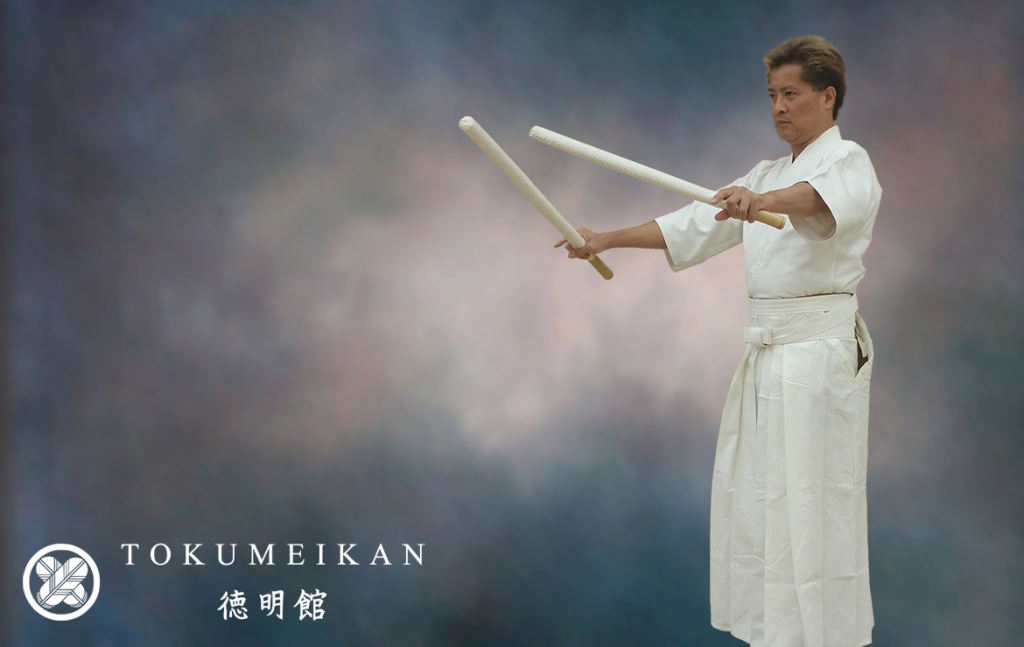
Question: How much does it cost (equipment, uniforms, etc…)?
AOI Budogu in Vancouver, E-Bogu in Los Angeles, Nine Circles in London, and Tozando in Japan are popular suppliers that many members buy from. For current prices, please consult their websites.
——————————————————————————————
Frequently Asked Questions About Kenjutsu: The Art
Question: Why would I wish to start studying a sword art when we no longer carry swords?
People who dedicate their lives to studying sword arts all have different reasons for studying. There are things in swordsmanship that you cannot learn anywhere else.
Question: What are the health benefits? (e.g., strength, stress relief, coordination, etc.)
It is a combination of the physical, the mental, the psychological, and the spiritual:
1) the physical: agility, coordination, dexterity, etc.
2) the mental: planning, predicting, observing, etc.
3) the psychological: perseverance, endurance, etc.
4) the spiritual: calmness, centeredness, following the Way, No-Mind, etc.
Question: Is the training brutal or intense?
No, it is not. Traditional martial arts are based on the practice of kata, pre-arranged sets of movements. Therefore, it is not sparring. It is scripted and choreographed. The training is thus educational in its approach.
Question: How would this training translate into my daily life?
A lot of people say that they feel better and feel more aware. Other possible benefits are things like developing better coordination, developing better agility. But it varies from person to person. For some, it’s great stress relief. For others, it is a different type of physical activity. Still others, the art and the tradition fulfills what they are lacking spiritually. And for some, the lifestyle of a swordsman, being a practitioner of a 500 year-old sword art, being part of an elite group of individuals in the world, has a mystical appeal. How it will affect you depends greatly on what you seek and what you feel you are missing from your life.
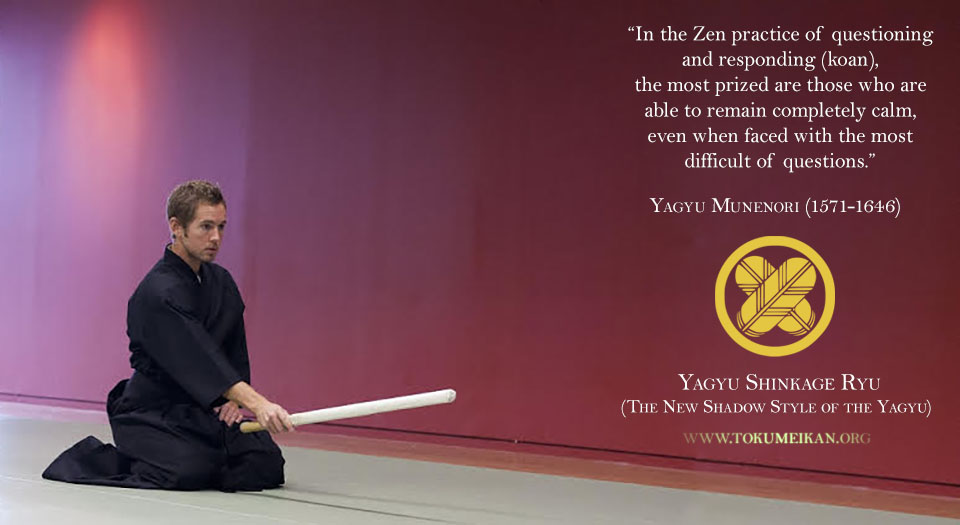
Question: Am I too old or too young to learn kenjutsu? Am I too little?
Emotional maturity is more important. There is an old saying: “When the student is ready, the Master will appear.” Readiness is the key.
In terms of size, it doesn’t matter much. Weapons are the great equalizer. You don’t need a lot of strength or size to wield a sword well.
Question: Do I have to be in good physical shape to do kenjutsu?
Not necessarily but it helps. Swordsmen come in all shapes and sizes. Obviously, the better physical condition you are in, the better you can move. The ability to move is extremely important in swordsmanship.
Other important physical qualities are agility, flexibility, manual dexterity (fine motor skill), eye-hand coordination, good body control, and a good sense of balance.
Equally important are mental attributes like mental flexibility, adaptiveness, awareness, good concept of spatial orientation, ability to learn, ability to mentally process a tactical situation, etc…
Sword-fighting ability is not just about the physical component.
Question: Kata versus kumite. Is it competitive?
Kenjutsu is not competitive. If you want competition, try kendo (Japanese fencing). In kendo, there is free sparring where you compete against other kendo practitioners. Kendo is a competitive sport so there are tournaments.
Practitioners in classical kenjutsu however work on kata only. They learn the mechanics, techniques, and tactics of swordsmanship through their study of the kata. To succeed in an environment that focuses on kata, cooperation is a more productive approach than competition. Working well with your partners is essential in order to learn.
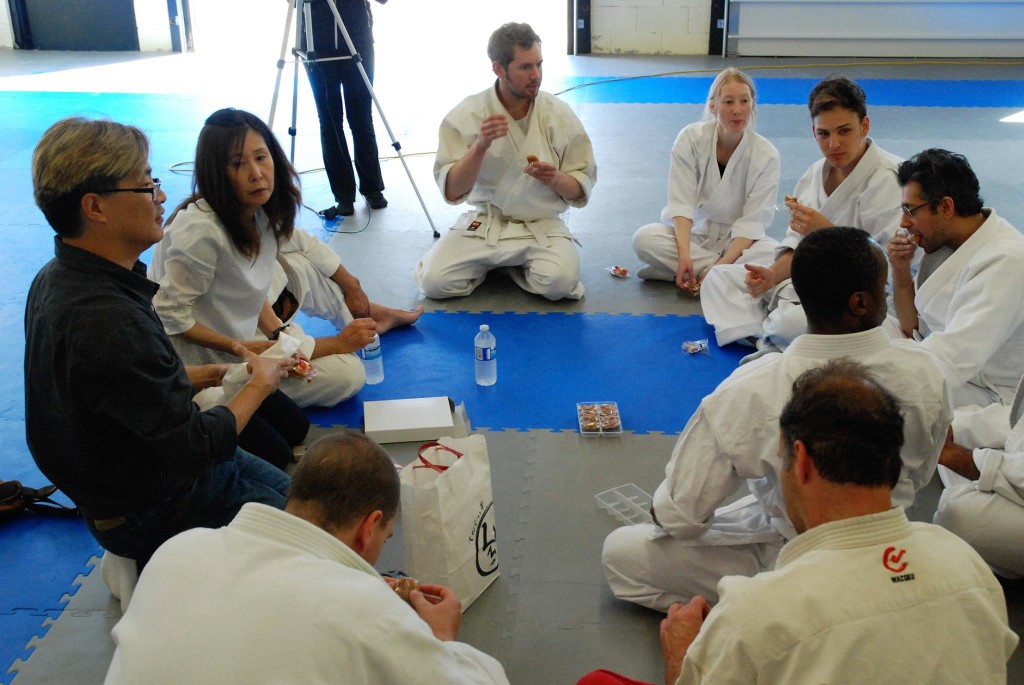
Question: About religion, will it conflict with my personal spiritual beliefs?
Every martial art comes from somewhere: from some time and some place. In some cases, religious philosophy can be present in the art form if the martial art in question has a history of originating in a temple or similar religious institution. You will have to investigate the art to see if it conflicts with your religious beliefs. It is difficult to generalize.
Question: Why would I want to choose kenjutsu over iaido, aikido or even kendo?
First off, some people do kenjutsu side-by-side with some other art, as a complement. It is not a matter of this one is better than that one. They are all good for different reasons. It really depends on what you are seeking. Second, they are all different and unique arts, with totally different philosophies. It’s like comparing apples and oranges. Really, it boils down to what you are seeking.
Question: What is the difference between kendo and kenjutsu? (for people with no experience in either)
Well, modern kendo came from an old style of kenjutsu. Broadly speaking (and this is very broad), kenjutsu is a term meaning “sword techniques”, and typically refer to old styles of swordsmanship. Kenjutsu styles are typically old (a few hundred years old at least) and have a curriculum heavily based on kata (pre-arranged patterns of movements) as the educational form.
Kendo is the modern Japanese form of fencing with bamboo swords, much like Western Olympic fencing. And like Western fencing, practitioners fight in fencing bouts which are scored by a point system. There are also formal gradings for rank and competitive tournaments because it is a sport.
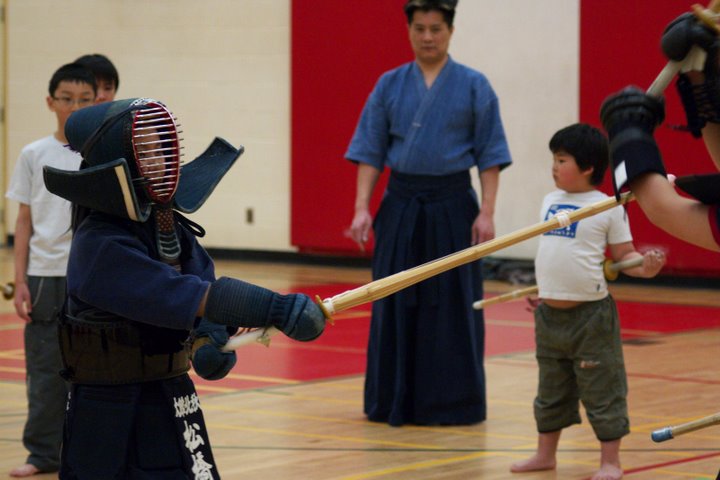
Question: What is the difference between kendo and kenjutsu? (for kendo practitioners)
You will learn through the practice of kata only, either through solitary or partnered kata. The focus is on real sword techniques, therefore any and all targets on the body are applicable. With battlefield styles from the Sengoku Period (the Warring States Period), they will focus on openings in the armor. With Edo Period styles (after the wearing of armor was obsolete), not being struck in any way was the key tactical goal. A strike received to any part of the body, however incidental, was damaging or fatal. Hence, the idea of the One-Cut became popular in the Edo Period. The famous style Itto Ryu (One Cut or One Stroke style) was such a style that embraced this philosophy of One Cut. And kendo developed from one branch of Itto Ryu, the Nakanishi Branch. In order to test their skills, they developed protective armor (bogu) and a bamboo sword (shinai). And in time, to save it from extinction in the Meiji Period, it gradually became a form of sport. As such, standardization of rules and a code of conduct to govern the sport were developed.
So the short answer is: Kendo is a modern sport. Kenjutsu is real life techniques from the Middle Ages.
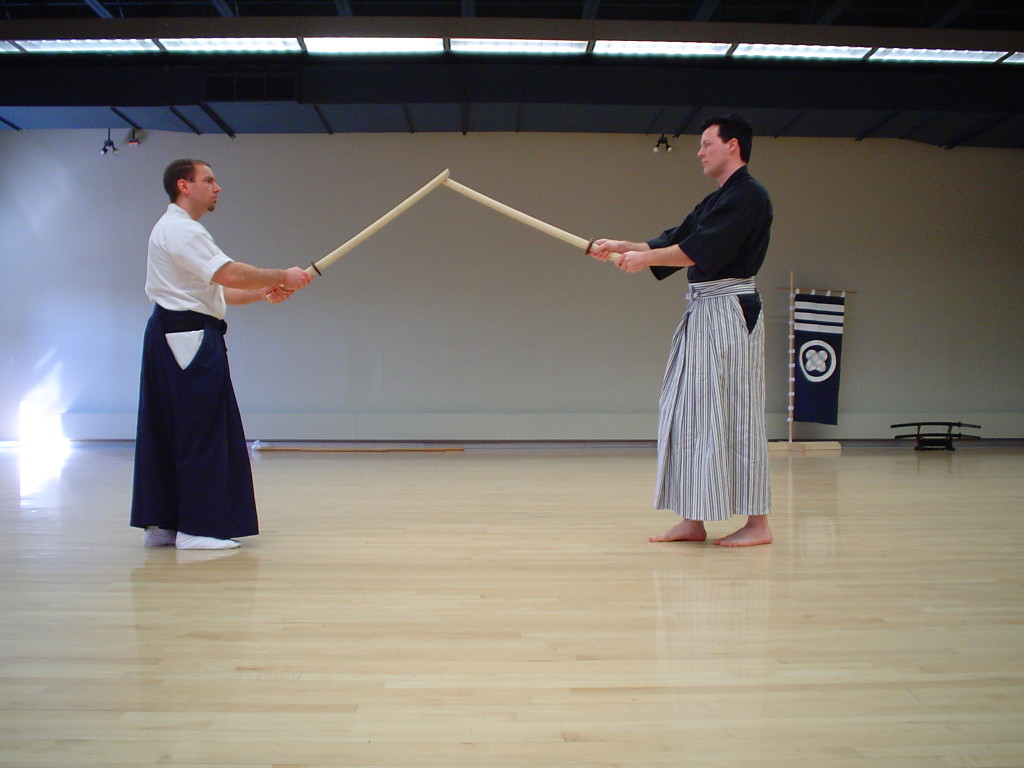
Question: How does kenjutsu relate to kendo and iaido?
Kendo is originally derived from Itto Ryu, one of the old styles of kenjutsu from the 1600’s. Now it is the modern sport of Japanese fencing. Kendo focuses on sparring (competing in a sport sense) with a simplified set of fundamental techniques and points are scored based on hitting pre-determined targets with accuracy.
Iaido is a modern term for the art of drawing the sword. It replaced the old term “battojutsu” (the art of drawing). But many iai schools are very old too. And some kenjutsu schools have an iai component in their curriculum, to complement their study of sword-fighting. Iaido is the art form focusing on how to draw the sword, cut with it, and then replace the sword back in its scabbard. These are real techniques for drawing and cutting with a Japanese sword. The majority of kata are based on the premise that you are ambushed while your sword is still sheathed.
Kenjutsu is the term covering the old styles of sword-fighting from the Middle Ages. These are real styles of swordsmanship with real techniques for fighting and killing enemies. Some styles focus on battlefield fighting and some styles focus on urban duelling scenarios.
So, how does kenjutsu relate to kendo and iaido? They are all arts focused on the use of the sword. But each one examines it from a different historical and tactical perspective.
Question: How does kenjutsu relate to iaido? (for iaido practitioners)
They are two sides of the same coin, so to speak. Some people have defined iaido as the sword art that deals with scenarios where the sword starts in the scabbard. The vast majority of the kata in iaido begin with the practitioner being accosted while his sword is still sheathed. Reacting calmly and correctly, drawing and cutting smoothly in one, fluid action was the focus of iai study.
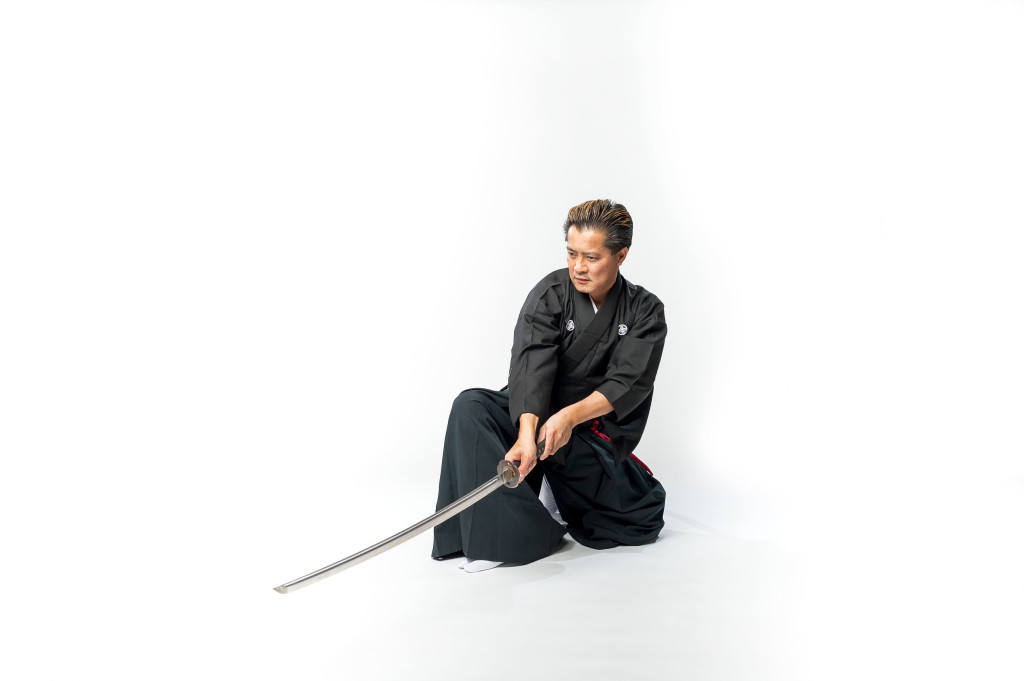
As regards kenjutsu, some people have defined kenjutsu as the sword art where the swords have already been drawn. There is no surprise element. Now, it is either a battlefield fighting scenario (fighting your way through a horde of enemy troops) or a duelling scenario (fighting against a swordsman of another school, one-on-one).
In many old kenjutsu styles, they already have their own built-in iai component in their curriculum.
In the old days, there was no separation of the two. Swordsmen studied both since both were paramount to one’s survival. You might be ambushed in the teahouse one day or sent to battle in your warlord’s army the next day. You had to be prepared for anything.
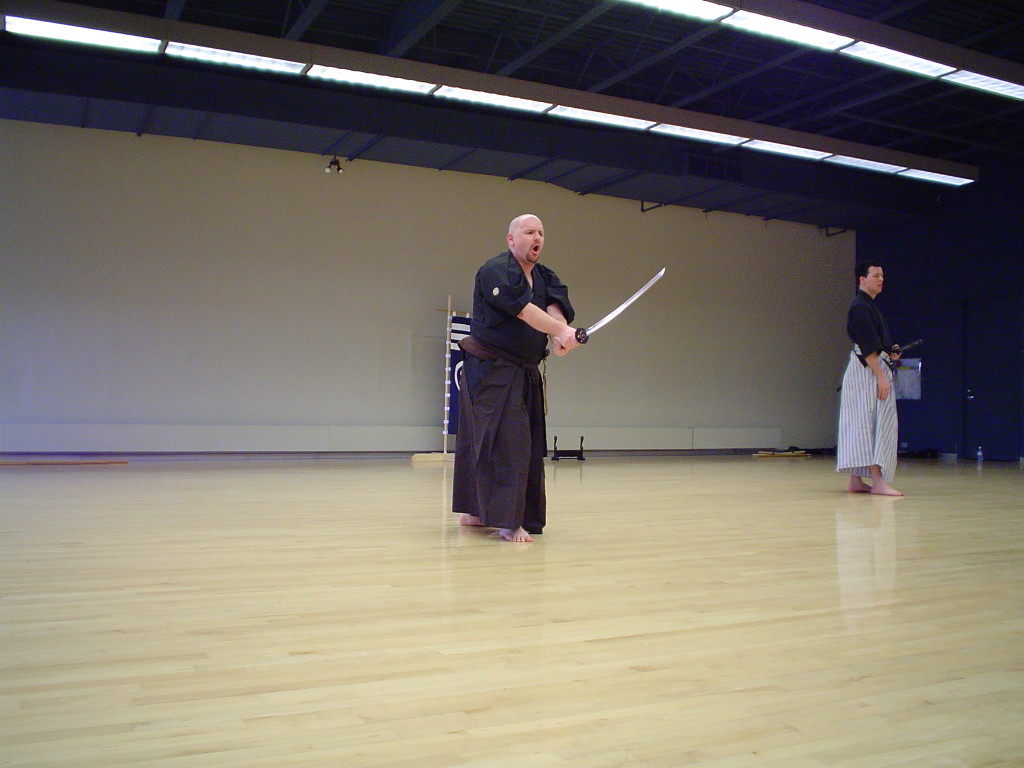
Question: Can I use it for defense? Can I learn to defend myself with kenjutsu?
Many martial arts are defensive in nature. Basically, a martial art is based on the idea of how to defend yourself, whether on the street or on the battlefield. Of course, no one uses swords nowadays. If the question is: does kenjutsu have any applicability today? The simple answer is no. There is no practical applicability to a self-defence situation in modern times because no one carries swords today. Yet, having said that, some people believe that the principles of fighting in general (like timing, distance, reading the attack, etc.) that you learn in sword-fighting can be applied to any hostile scenario where there is an attacker and a defender.
Question: Are there competitions in kenjutsu?
No, there are no competitions. If you are seeking sparring bouts and tournaments, please try kendo.
Question: How long does it take to learn all the fundamentals and kata?
It can take months, years, decades, or a lifetime. It really depends on how much you practice.

Question: How long does it take to become a Black Belt?
In our system, we do not have belt ranks.
To reach a high level of proficiency in the art, there really is no timetable for judging this. Every student is different with totally different traits and make-up. It also depends how often you practice.
Here is an interesting perspective from aikido. In aikido, they estimate it takes an average person 7 years of committed practice to reach shodan (1st degree black belt), at which time they are then deemed to be a “serious beginner”.
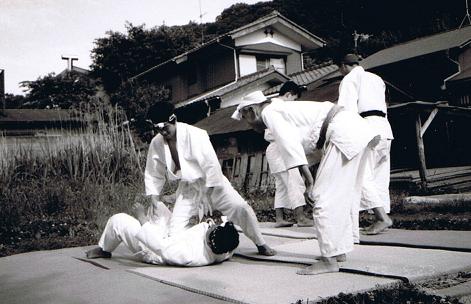
Question: You don’t have ranks. Why not?
First of all, we do not have the authorization to bestow ranks. That is the purview of the headmaster in Japan. In old styles of kenjutsu, some schools only have two ranks: teacher and student. You are a student until the headmaster makes you a teacher.
Second of all, in the old days, people trained for survival. You trained in order to survive on the battlefield. You trained to survive an encounter in the street. You trained in order to escape an ambush.
Third of all, our founder, a practitioner with 30 years of training, still considers himself a beginner, a white belt if you will. His teachers before him thought of themselves as beginners. There is an old saying in Zen Buddhism: “shoshin”. Translated, it means “beginner’s mind”. That is the spirit of traditional Japanese budo which is heavily based on the idea of humility.
Fourthly, in Japan, they have an old system called the sempai-kohai system. Basically, it is a seniority system. Whoever is there before you is your sempai (senior). Whoever comes after you is your kohai (junior).
Question: “Can you tell me right up front what koryu arts involve and save me the time and effort of unnecessary training?”
That is why it is useful to watch a class. You will see exactly what is involved.

Question: “What can this school offer me?”
In Japan, a better mindset is to focus on impressing the teacher and showing him or her that you show some potential, some promise. Mr. Tong was lucky (and eternally grateful) that his teachers saw something in him and decided to take a chance on him. They could have just as easily said no.
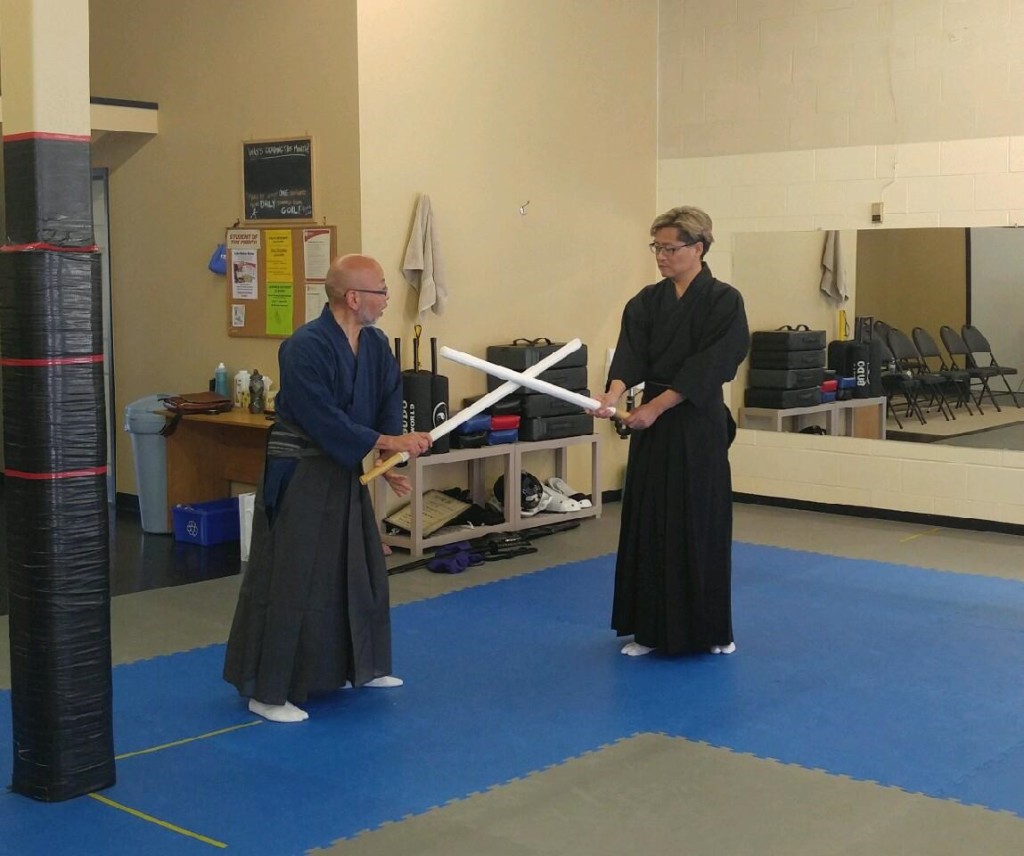
For the teacher, taking on a new student represents a huge investment of time and effort. So for the teacher, he will not make that decision lightly. It would be best to demonstrate to them why you would be a good student, a good investment of their time and energy.
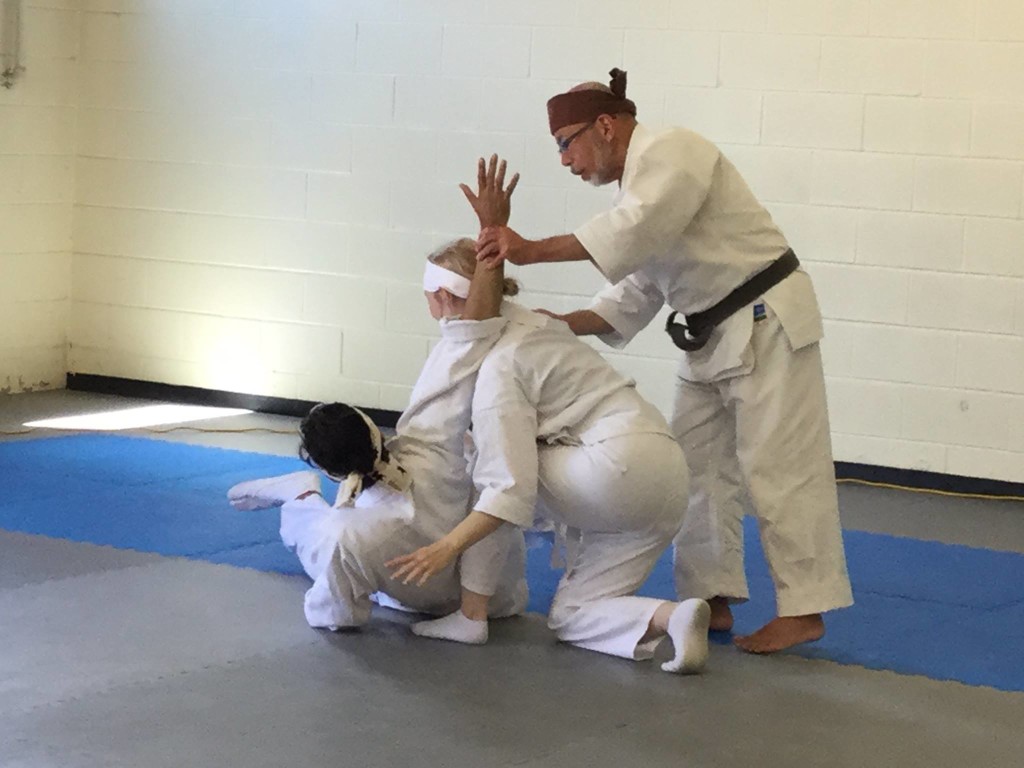
——————————————————————————————–
Frequently Asked Questions About the Style: Yagyu Shinkage Ryu
Question: What is the lineage of Yagyu Shinkage Ryu? When does it date back to? Is it derived from a certain style or is it a pure form of martial arts? Is it a well-established art form?
The founder of Shinkage Ryu was a veteran samurai and master swordsman named Kamiizumi Ise-no-Kami. He is also known by the name Kamiizumi Nobutsuna. He developed the style from a fusion of his studies in two older styles: Kage Ryu and Katori Shinto Ryu. It dates back to 1540. He would eventually meet and teach a talented swordsman named Yagyu Munetoshi, who would become the second headmaster. Munetoshi’s 5th son Munenori would eventually become famous as the instructor of swordsmanship to the first three Tokugawa Shoguns. The style is very famous, has a long lineage, and a fascinating history. Please look through our website for more information on the history of the style.
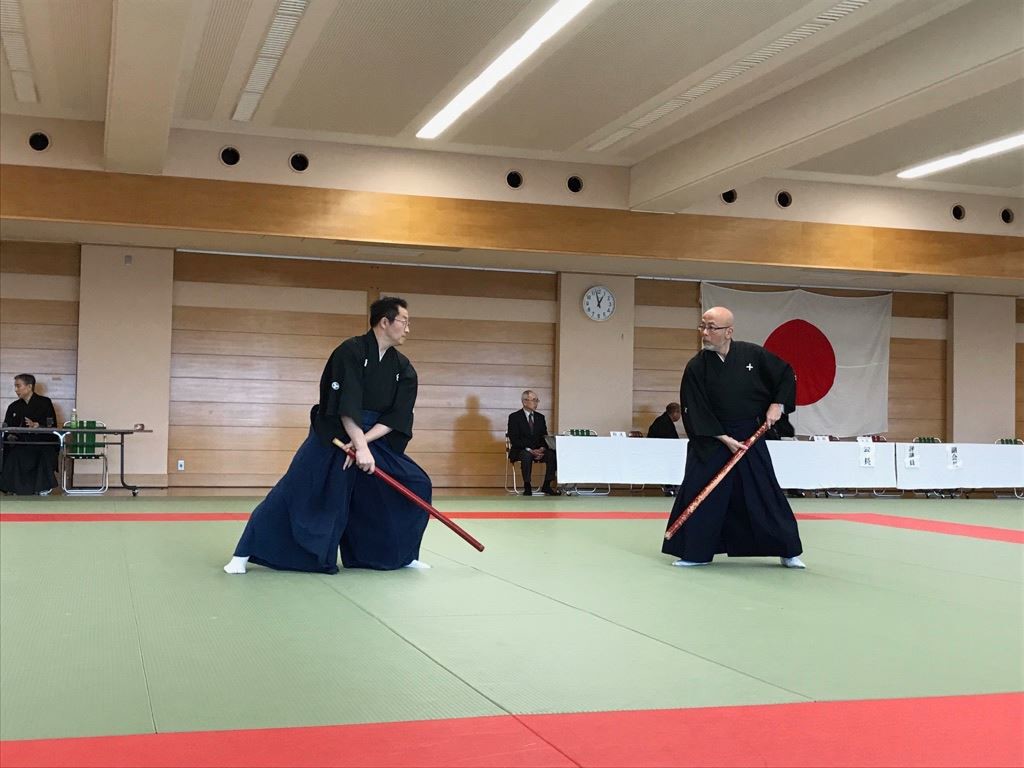
Question: What separates Yagyu Shinkage Ryu from other Japanese sword styles?
It is a famous style because it was the Shogun’s official style. Many styles vied for the honour of this position but the Shogun chose this style because he was impressed by its philosophy, a way of thinking that fit his way of thinking. Yagyu Shinkage Ryu has a very unique and revolutionary philosophy. Look through our website for more information on the philosophy of our style.
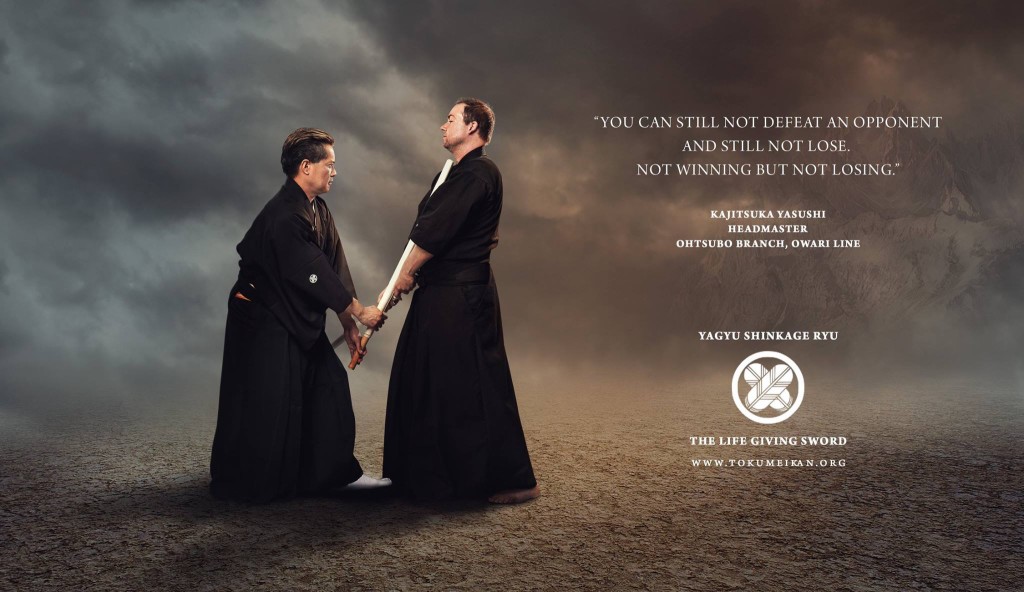
Question: So what is the spirit of the Yagyu way?
Being calm, peaceful. Yagyu Shinkage Ryu is used for defense, never for attack.
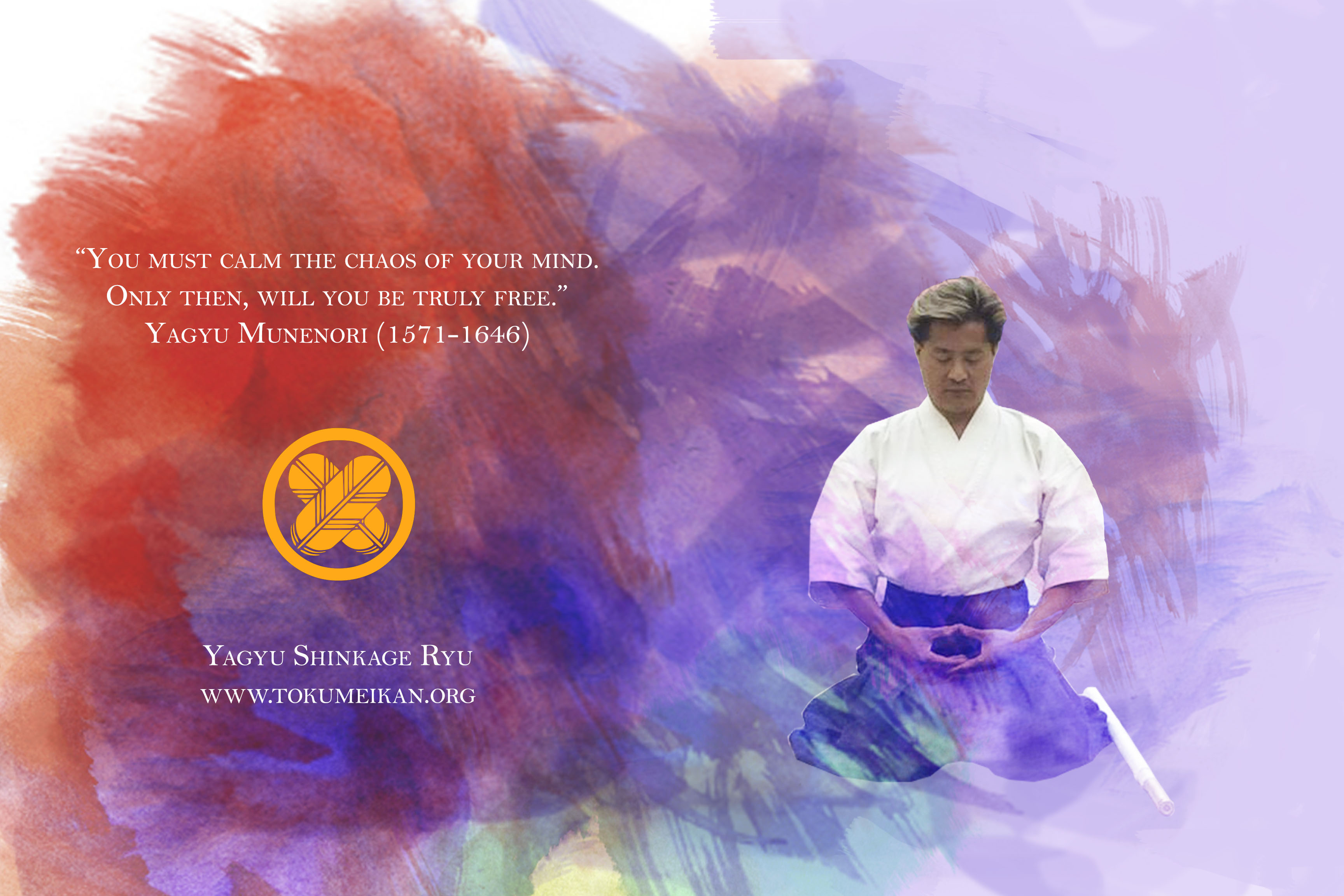
——————————————————————————————–
